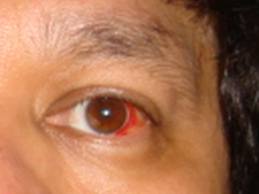Pressure Washers (Download)
Pressure Washers http://www.orangecountyhandymancontractor.com 1 A mechanical sprayer that uses high pressure water to clean Basic Components: Motor Trigger Switch High-Pressure H ose Description of a Pressure Washer 2 Pressure Washer Uses Used to clean large, sturdy surfaces 1000 to 1500 PSI — Washing a car, bicycle, lawn furniture, grill 1400 to 1850 PSI — Cleaning patio, small deck 2000 to 3000 PSI — Cleaning a large deck, washing siding 2800 to 4000 PSI — Cleaning stained concrete, stripping paint By comparison, a garden hose delivers about 40 PSI. 3 Safety Concerns High pressure water Excessive noise from compressor (gas powered) Flying debris during use Initial Recoil from gun pressure Electric shock from water + electricity Corrosive chemical hazard Exhaust fumes 4 Pressure Washer Related Injuries Contact with water stream Hearing damage Injury from flying debris 5 Pressure Washer Related Injuries Falling from recoil and improper bracing Electrocution by water and power cords (electric -powered) Slip and fall from wet surfaces CO 2 Poisoning from gas-powered engines 6 Pressure Washer Related Fatalities OSHA investigated one pressure washer -related fatality case from 1990 thru 2009 that resulted in the death of two workers. The cause of death was a result of inhaling glycolic acid and carbon monoxide in a poorly ventilated space. 1 1 Source: Extracted from OSHA Accident Investigation Data 1990-2009 7 OSHA Regulations Currently, there are no OSHA regulations that specifically mention pressure washers. 8 Required Personal Protection Equipment Protective Gloves Proper Footwear (Closed-Toe Shoes) Safety Glasses and Face Shield Ear Plugs or Ear Muffs Hardhat Reflective Safety Vest Class III CO 2 Monitor (When operating in enclosed spaces) 9 Improper PPE 10 Proper PPE 11 Correct Operating Procedures Inspect equipment prior to use Stabilize the unit to negate the possibility of roll-over Connect water source Make sure source stays connected and turned on while operating Never fill engine with gasoline while engine is running or hot or operate it in an enclosed space Stand in a firm stance to negate initial recoil Be aware of the surroundings Never point wand at/near people and be conscious of overspray Do not operate the pressure washer near other individuals Always test the ground fault circuit interrupter (circuit breaker or outlet) before using an electric pressure washer 12 Maintenance, Storage, and Transporting Be sure to visually inspect all hoses attached to the unit prior to operation Replace any damaged hoses, do not attempt to repair Periodically check the spark plug gap, fuel filter, air filter and gas tank for damage (gas-powered) Replace/Repair as necessary Always store and transport gas units in a secure and upright position When storing for prolonged periods remove any gasoline in an approved manner 13 Think Safety Work Safely 14

